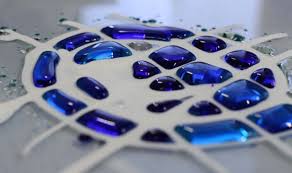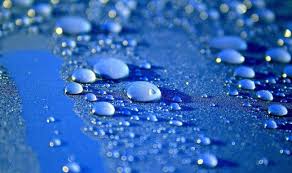Innovative self-cleaning coatings and paints offer numerous opportunities to reduce maintenance costs, enhance building aesthetics, and possibly improve air quality. However, challenges such as ensuring durability and scalability remain.
Self-cleaning coatings and paints can be used in modern construction to reduce maintenance costs, improve durability, and support sustainability. Self-cleaning coatings can have hydrophobic or hydrophilic properties, which allow them to remove dirt through rainwater. Hydrophobic coatings can also prevent unauthorized substances like graffiti or advertisements from being applied to walls. Superoleophobic coatings can remove oil-contaminated dust from areas near beaches or industries without detergents. Photocatalytic coatings can be used for sound absorption, odor removal, and disinfection
In light of the increasing levels of air pollution, modern construction requires materials that come with self-cleaning features. These new age materials not only help enhance air quality but also add to the charm of buildings especially in crowded urban and industrial zones. This article delves into the realm of self-cleaning coatings and paints discussing their uses and benefits, in construction practices.
Read also: Durable Roofing Material
Production and Benefits of Self-cleaning coatings and paints
Self-cleaning properties can be imparted to a paint or coating by controlling its wettability (hydrophobic or hydrophilic) or photocatalytic activity. Wettability results from the equilibrium between cohesion and adhesion forces. Super-hydrophilic and super-hydrophobic materials can both exhibit self-cleaning behavior. The first achieves this through slow sheeting of water (water-based self-cleaning), while the other achieves it through the speedy rolling of water on the surface (waterless self-cleaning).
There are techniques used to make self-cleaning coatings and paints such as, dip-coating, spin coating, electrodeposition, plasma treatment, layer-by-layer assembly, electro-spinning and chemical etching.
Photocatalysts such, as TiO2, SnO2 and ZnO have the ability to break down surface pollutants when exposed to light, effectively eliminating them from the paint or coating. When these materials are illuminated they generate oxidizing agents like hydrogen peroxide and hydroxyl radicals which can break down pollutants on a surface into less harmful by-products such as CO2 and water. The presence of bacteria on building surfaces can lead to discoloration, corrosion, cracks, material breakdown, weakening and dissolution. Therefore coatings containing properties, like metal oxide nanoparticles demonstrate superior self-cleaning capabilities.
Read also: Most paints and coatings manufactured or sold in Kenya have high levels of lead
In addition to keeping building exteriors clean on their own, these special coatings and paints can also undergo customization to resist fogging, icing, corrosion, and separate oil from water. Currently, cleaning buildings mostly involves mechanical techniques that use up a lot of manpower, water and electricity. Additionally the waste produced during cleaning often finds its way into sewage systems, which contributes to water pollution. However, utilizing self-cleaning coatings and paints can reduce infrastructure maintenance costs by preventing damage and eliminating the need for repainting.
Self-cleaning coatings have found applications across sectors such as construction, fashion, automotive and more. Following the impact of COVID-19 there has been an increase in the need for coatings with self-cleaning and germ killing properties. These coatings are now expanding beyond their traditional settings and finding use in critical environments such as hospitals and educational institutions as well.
One major use of these coatings is in modern building projects, particularly in window glasses and external paint applications. The build-up of pollutants, gases, dust and aerosols in the air frequently leads to deposits and a weathered appearance on building surfaces, hastening their deterioration. Therefore by incorporating self-cleaning coatings and paints we not only enhance the air quality surrounding around buildings but also simplify maintenance tasks.
Moreover, self-cleaning coatings and paints, which clean themselves and repel water, act as barriers to prevent unauthorized materials such as graffiti or ads. Likewise areas near industries or beaches, superoleophobic coatings that repel oil can effectively eliminate dust contaminated with oil without requiring detergents. Coatings that are photocatalytic have uses, such, as absorbing sound along roads and tunnel walls sterilizing operating rooms and eliminating odors in bathroom tiles.
Read also: The Advantages of Hiring a Commercial Painting Contractor

Challenges in Self-Cleaning Coatings and Paints
Despite the advancements in self-cleaning coatings and paints, significant challenges remain that hinder their practical application and longevity. These products encounter problems related to aging and environmental degradation, highlighting the necessity for continuous research and development. The interaction of these coatings with atmospheric charges and radicals can change their surface properties, resulting in reduced mechanical stability and diminished functionality. This degradation affects their effectiveness and reduces their useful life. It is therefore essential to evaluate performance of these coatings in diverse real-world environments, such as urban, industrial, and rural settings.
Moreover, the integration of these coatings with porous building materials like concrete presents additional challenges. Concrete’s complex surface characteristics can result in poor adhesion, leading to damage or delamination of the coating. The performance of photocatalytic coatings is also dependent on several variables, including light intensity, the nature of the building surfaces (like roads and walls), and the presence of other chemical compounds. These factors, along with competing surface reactions, can significantly influence the effectiveness of these coatings.
Read also: Top 6 things to consider before painting your walls
Despite the progress made in self-cleaning coatings and paints there are still obstacles that prevent their use and long-term effectiveness. These products encounter challenges related to aging and environmental deterioration underscoring the importance of research and innovation. The way these coatings interact with elements and radicals can change their surface characteristics resulting in reduced strength and functionality. This decline impacts their efficiency and shortens their lifespan. Therefore it is crucial to assess how well these coatings perform in real life environments.
Read also: How Long Can Primer Sit Before Painting: An Expert Painter’s Guide
Another major challenge in Self-cleaning coatings and paints lies in the scalability and affordability of these technologies. Although certain materials exhibit encouraging outcomes, in controlled laboratory environments the substantial expenses linked to expanding production for business applications hinder their feasibility.

What latest in Self-cleaning coatings and paints
In the recent studies there has been a focus, on improving the characteristics of self-cleaning coatings like toughness, flexibility, resistance to scratches and see through quality. These features play a role not only in keeping buildings visually pleasing but also in ensuring their lasting strength and usefulness, across different weather conditions.
Read also: Most paints and coatings manufactured or sold in Kenya have high levels of lead
Future Prospects
It is crucial for the construction and materials industry to focus on improving self-cleaning coatings and paints. Developing products that can endure environmental factors is key. Utilizing advancements like machine learning and artificial intelligence plays a role. In improving design procedures ensuring simulations and enhancing manufacturing methods to meet industry requirements effectively.
By incorporating nanomaterials we can enhance the strength and UV protection of coatings making them more durable. The self-repair capabilities can also reduce maintenance expenses, and prolong the lifespan of products which could benefit businesses economically. Additionally it is crucial to prioritize eco practices to promote growth and protect the environment.
Read also: Are you looking to buy paint?

